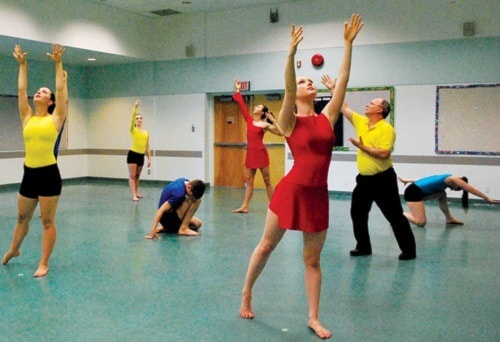Scientists aren’t known for their dance skills.
It’s their intellect that gets recognition, not usually their ability to boogie down.
Most scientists don’t don leotards and leap across a stage to convey the inner mysteries of their scientific work.
Yet, that’s exactly what a contest created by Science Magazine has asked them to do with the Dance Your PhD international competition – leotards optional.
The challenge was accepted by David Bigelow, chairman of the mathematics department at Vancouver Island University.
“I was really excited about it,” he said. “I realized it could be quite an interesting project. The project is about answering the question ‘what is your thesis about?’”
His task was taking his mathematical thesis, Latin squares and triple systems, and creating a dance video to explain it.
He took two years to create the thesis, completing it in 1990 as a PhD student at the University of Waterloo in Ontario.
In the simplest terms, Bigelow’s thesis can be boiled down to a comparison with Sudoku. In Sudoku, numbers can only appear once in each row and column.
However, Bigelow’s theory throws a curve ball in the mix.
Numbers can appear multiple times per row and column but have to appear the same amount of times as every other number.
It’s complicated further by the inclusion of a two transversal. The transversal means if you take specific numbers and place them outside the original square, it would create a new row and column where each number still appeared twice and a new symbol could be added to replace the one removed.
Now picture that as a dance. That’s where the expertise of dancer and choreographer Ivana Ho came into play.
Ho trained at the National Ballet School in Prague. Bigelow and Ho met this spring while working on plays presented by the Nanaimo Theatre Group.
“The first challenge was trying to explain what the theory was to Ivana, who has no training in math,” said Bigelow.
And for Ho, the challenge was teaching Bigelow to dance.
“The dance part I am really happy with. It was so creative,” said Ho. “The choreographed part with David was just amazing. It was a lot of fun.”
For the project, Ho enlisted the help of eight other professional dancers to represent numbers.
The video is now in post-production and will be submitted for the contest this fall before it closes on Oct. 1.
It’s the fifth year of the Dance Your PhD international competition.
Finalists in the four categories – physics, chemistry, biology and social sciences – win $500.
The grand prize winner will receive $1,000 and a trip to Belgium to attend the TedxBrussels event, which explores technology, entertainment and design.
Once the video is finished, it will be posted on VIU’s website for people to view.
